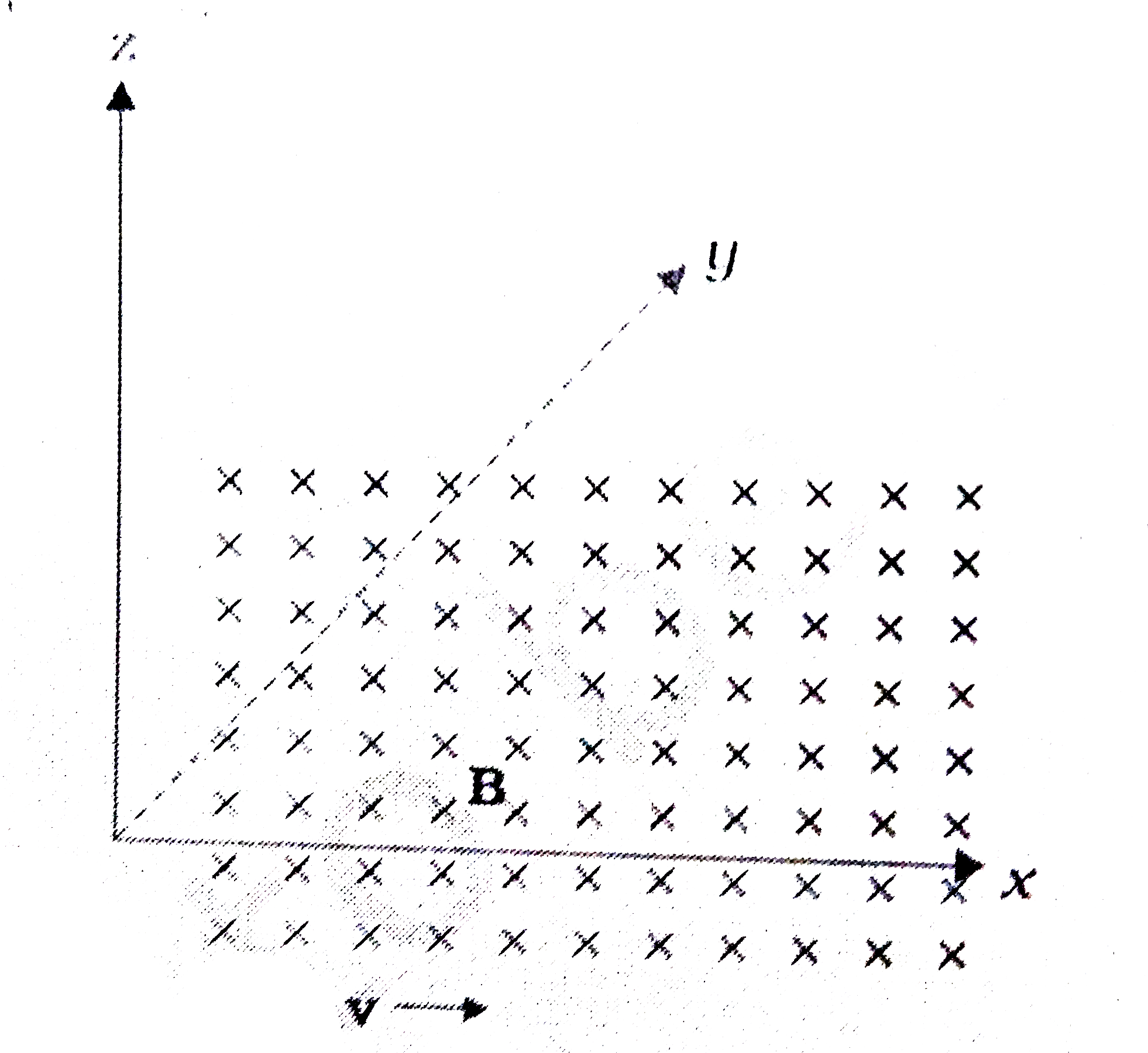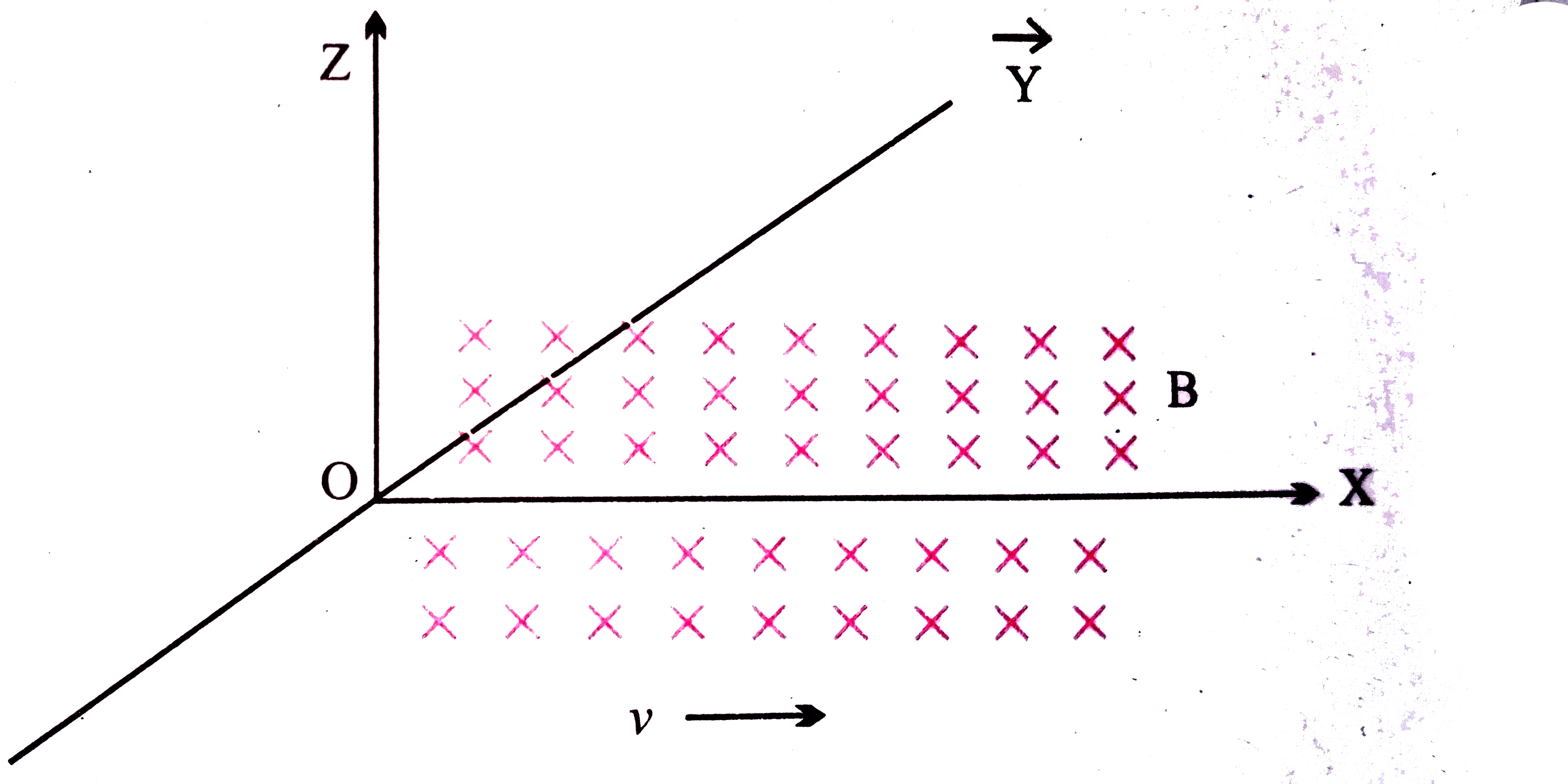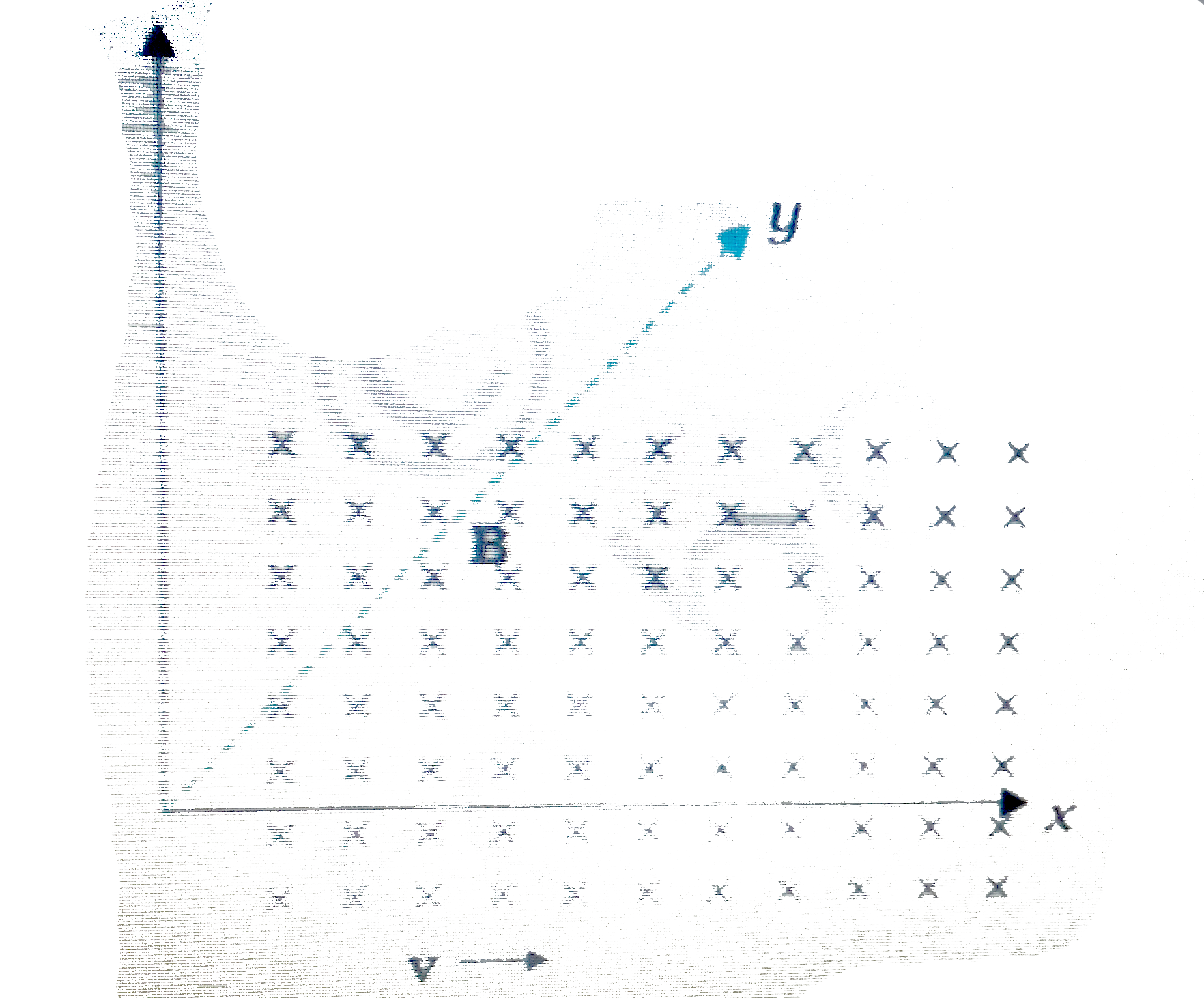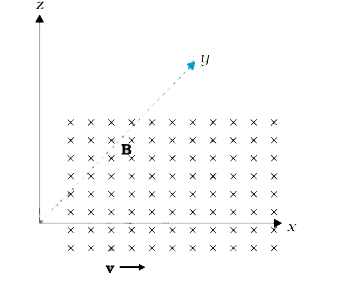If the magnetic field is parallel to the positive Y-axis and the charged particle is moving along the positive X-axis as per figure, which way would the Lorentz force be for (a) an electron (negative charge), (b) a proton (positive charge).Solution in Gujrati
1. Lorentz force (here magnetic force) exerted on a charge q moving with velocity →v in a uniform magnetic field →B is given by,
→Fm=q(→v×→B) ...(1)
2. For an electron, q = - e and so as per the diagram,
→Fm=−e(→v×→B)
= e(→B×→v)
= e[B(ˆj)×v(ˆi)] (From the diagram)
evB(ˆj׈i)
∴→Fm=evB(−ˆk)
⇒→Fm on electron is along - Z-axis.
3. For a proton, q = +e and so from equation (1),
→Fm=e(→v×→B)
= e[v(ˆi)×B(ˆj)] (From the diagram)
= evB(ˆi׈j)
∴→Fm=evB(ˆk)
⇒→Fm on proton is along + Z-axis.
Topper's Solved these Questions
- BOOK - KUMAR PRAKASHANCHAPTER - MOVING CHARGES AND MAGNETISMEXERCISE - SECTION B (NUMERICAL FROM TEXTUAL EXERCISE)28videos
MOVING CHARGES AND MAGNETISM
- BOOK - KUMAR PRAKASHANCHAPTER - MOVING CHARGES AND MAGNETISMEXERCISE - SECTION B (NUMERICAL FROM .DARPAN. BASED ON TEXTBOOK)13videos
MOVING CHARGES AND MAGNETISM
- BOOK - KUMAR PRAKASHANCHAPTER - MOVING CHARGES AND MAGNETISMEXERCISE - SECTION A (TRY YOURSELF)89videos
MOVING CHARGES AND MAGNETISM
- BOOK - KUMAR PRAKASHANCHAPTER - MAGNETISM AND MATTEREXERCISE - SECTION D Multiple Choice Questions (MCQs) (MCQs asked in Competitive Exams) MCQs asked in Board Exam and GUJCET7videos
MAGNETISM AND MATTER
- BOOK - KUMAR PRAKASHANCHAPTER - RAY OPTICS AND OPTICAL INSTRUMENTSEXERCISE - SECTION-D (MULTIPLE CHOICE QUESTIONS (MCQs))(MCQs ASKED IN COMPETITIVE EXAMS)142videos
RAY OPTICS AND OPTICAL INSTRUMENTS
Similar Questions
A circular coil of wire consisting of 100 turns, each of radius 4.0 cm carries a current of 0.40 A. What is the magnitude of the magnetic field B at the centre of the coil ?
02:19View SolutionElectron is rotating in circular orbit with radius 5.2×10−11m and with linear speed 2×106ms−1 in an hydrogen atom around the proton. Find the magnetic field produced at the centre of the orbit.
01:58View SolutionState Oersted's experiment.
05:46View SolutionAt a place on earth the vertical component of earth's magnetic field is √3 times its horizontal component. The angle of dip at this place is …...
04:35View SolutionWhich of the following is used in optical fibres ?
03:54View SolutionA charged particle moves along positive y-axis with constant velocity in uniform electric and magnetic fields. Ilf magnetic fiedl is actig along positive x-axis, then, electric field should act along positive z-axis. Reason: To keep the charged particle undeviated the relation E=Bxxv must hold good.
03:52View SolutionA positively charge particle moving along x -axis with a certain velocity enters a uniform electric field directed along positively y-axis. Its
05:46View SolutionIf the magnetic field is parallel to the positive y-axis and the charged particle is moving along the positive x-axis (Fig.), which way would the Lorentz force be for (a) an electron (negative charge), (b) a proton (positive charge).
03:30View Solutionयदि चुंबकीय क्षेत्र धनात्मक y- अक्ष के समांतर है तथा आवेशित कण घनात्मक x -अक्ष के अनुदिश है (चित्र 4.4 दिखिए), तो लोरेन्ज बल किस और लगेगा जबकि गतिमान कण a) इलेक्ट्रॉन (तृण आवेश) b) प्रोटोन (धन आवेश) है।
 04:10View Solution
04:10View Solutionयदि चुम्बकीय क्षेत्र धनात्मक Y-अक्ष के समान्तर है तथा आवेशित कण धनात्मक X-अक्ष के अनुदिश गतिमान है तब निम्न चित्रानुसार लॉरेंज बल किस ओर लगेगा । जबकि गतिमान कण, इलेक्ट्रॉन (ऋण आवेश), प्रोटॉन (धन आवेश) है ।
 02:08View Solution
02:08View Solutionएक प्रोटॉन धनात्मक X-अक्ष के अनुदिश गति कर रहा है, जबकि धनात्मक Y-अक्ष के अनुदिश एकसमान चुंबकीय क्षेत्र कार्य कर रहा है। प्रोटॉन पर कार्य करने वाले बल की दिशा बताईए।
03:12View SolutionIf the magnetic field is parallel to the positive y-axis and the charged particle is moving along the positive x-axis (Fig.), which way would the Lorentz force be for (a) an electron (negative charge), (b) a proton (positive charge).
 05:40View Solution
05:40View SolutionIf the magnetic field is parallel to the positive y-axis and the charged particle is moving along the positive x-axis (figure ), which way would the Lorentz force be for (a) and electron (negative charge), (b) a proton (positive charge)
View SolutionIf the magnetic field is parallel to the positive y-axis and the charged particle is moving along the positive x-axis (Fig. 4.4), which way would the Lorentz force be for (a) an electron (negative charge), (b) a proton (positive charge).
01:42View SolutionIf the magnetic field is parallel to the positive y-axis and the charged particle is moving along the positive x-axis (Fig. 4.4), which way would the Lorentz force be for (a) an electron (negative charge), (b) a proton (positive charge).
 03:05View Solution
03:05View SolutionIf the magnetic field is parallel to the positive y-axis and the charged particle is moving along the positive x-axis (Fig.), which way would the Lorentz force be for (a) an electron (negative charge), (b) a proton (positive charge).
 View Solution
View Solution

